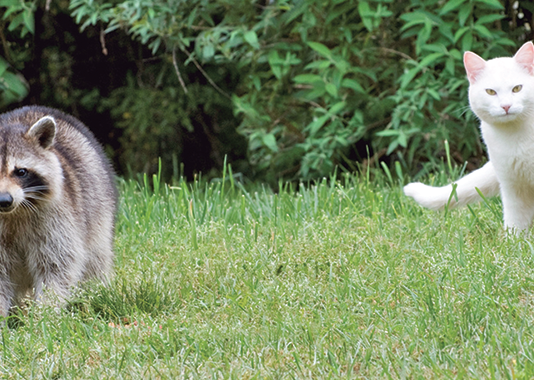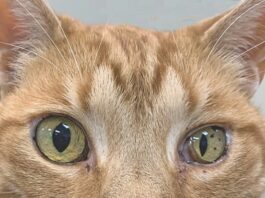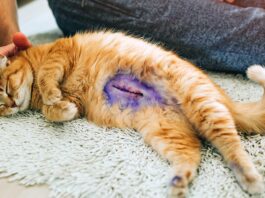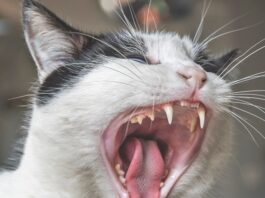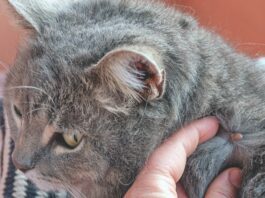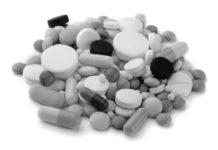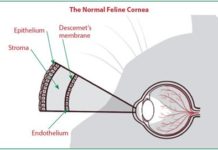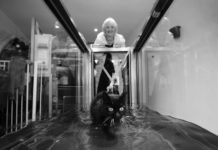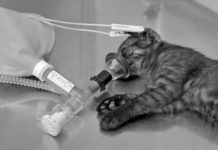A Nutritionist’s Top Recommendations
Generally speaking, which supplements are beneficial for cats? Which are essential for their health, especially as they age and need to maintain mobility and cognitive ability?
Learn the Truth about Supplements
Manufacturers in the $1-billion pet supplement market would like cat owners to believe that an array of their products, ranging from glucosamine to fish oil to vitamin pills, will help our cats live longer, healthier lives. Whether those supplements are actually effective is not known. Few large-scale studies have been done, and governmental oversight and regulations do not exist.Nutritionist Joseph Wakshlag, DVM, Ph.D., ACVN, ACVSMR, at Cornell University College of Veterinary Medicine believes there is little proof that many of the promotional claims about supplements are accurate; however, one study on deep-sea fish oil has shown it can be beneficial. Dr. Wakshlag, president-elect of the American College of Veterinary Nutrition, explains more about the fish oil study in the sidebar on Page 5 and on supplements in general in the following Q & A.
Short Takes: March 2015
A new test for chronic kidney disease in cats has identified its onset an average of 17 months earlier than existing methods, according to a small study published in the Veterinary Journal. Researchers at Oregon State University and IDEXX Laboratory developed a biomarker - a substance indicating disease called SDMA - and used it in a controlled study of 32 older but otherwise healthy cats. When available commercially, a test based on the biomarker could alert cat owners and veterinarians to kidney disease through periodic checkups, researchers say.Chronic kidney disease is common in geriatric cats and often causes their death, says researcher Jean Hall, DVM, Ph.D., at Oregon State. Damage from it is irreversible, but this is an important advance, in that we should be able to identify the problem earlier and use special diets to slow the disease.
Techniques and Treatments From Stem Cell Therapy to Massage
These are among the treatments that veterinarians increasingly use to improve cats well-being:
Telltale Signs: Squinting and Red Eyes
Other than the unlikely use of goggles, one of the best ways to protect your cats vision is to pay attention to his behavior. If hes squinting or rubbing his eyes, he could have a corneal ulcer. The painful condition is caused by an erosion of the layers of the cornea, the translucent outer covering of the eye.Yet another telling sign is a discharge from the eye. This can range from tearing to a thick secretion. An opaque white, yellow or blue coloration may also be noticeable. Eventually, the discoloration and a cloudiness of the cornea can prevent light from entering the eye and result in blindness.
The Common Cause of Ear Infections
One common reason for veterinary visits among cats is otitis externa, or inflammation of the external ear canal. Most people believe that that the term otitis externa means an ear infection, but that isnt true. Something has to breech the normal defense mechanism of the ear to trigger the infection, says veterinary dermatologist William H. Miller, Jr., VMD, Medical Director of the Cornell University Hospital for Animals. Once the surface of the ear canal is damaged, bacteria or yeast inside and around the canal can cause an infection. The underlying causes can include tumors, allergies, ticks or fleas, and excessive grooming and ear wax. But by far the most frequent cause in cats, especially kittens, is ear mites.
The Anatomy of the Cornea
The cornea, the clear coating of the eye that admits light, has layers of specialized skin cells, including:
A Cat on an Underwater Treadmill?
The cats hip problem was so painful that he required a femoral head osteotomy, the surgical removal of the top of the thighbone forming the ball and socket joint. Afterward, the supporting muscle needed to be strengthened to bear the cats weight, but he refused to use his limb.
The solution: Exercise in an underwater treadmill twice a week for two or three weeks. Movement is easier underwater, and the resistance of the water helps strengthen muscle. It got the cat jump-started into using the leg better, says Joseph Wakshlag, DVM, Ph.D., one of 83 specialists in the U.S. certified by the American College of Veterinary Sports Medicine and Rehabilitation. He heads the Sports Medicine and Rehabilitation service at Cornell University Hospital for Animals.
The solution: Exercise in an underwater treadmill twice a week for two or three weeks. Movement is easier underwater, and the resistance of the water helps strengthen muscle. It got the cat jump-started into using the leg better, says Joseph Wakshlag, DVM, Ph.D., one of 83 specialists in the U.S. certified by the American College of Veterinary Sports Medicine and Rehabilitation. He heads the Sports Medicine and Rehabilitation service at Cornell University Hospital for Animals.
In The News: March 2015
Animal shelters in the U.S. take in 3.4 million cats annually and euthanize 1.3 million of them. Two shelter medicine programs have set out to save many of those lives with the launch of the Million Cat Challenge.The Koret Shelter Medicine Program at UC Davis, Maddies Shelter Medicine Program at the University of Florida and hundreds of animal shelters throughout North America want to challenge animal control facilities and private shelters to reduce euthanasia.
In The News: February 2015
By far the most common heart disease in cats is hypertrophic cardiomyopathy (HCM). The characteristic thickening of the muscle of the left ventricle seen with HCM affects the hearts ability to pump blood. One complication is that blood clots form and dislodge from the heart and block blood flow in large arteries. The clots cause pain, nerve and muscle damage, and can lead to death. Treatment today is only minimally effective.A study led by Fern Tablin, VMD, Ph.D., at UC Davis will analyze the activation of blood platelets - cells that help blood clot - in cats with HCM with the goal of early detection of the disease. Many affected cats show no signs. Others have labored or rapid breathing and lethargy.
Anesthesia Presents Fewer Risks Today
If your cat needs to have anesthesia, you can rest easier about the procedure because it poses fewer risks today, thanks to newer drugs, precise monitoring and an increased number of board-specialized veterinarians.Our discipline has evolved, says Luis Campoy, LV CertVA, MRCVS, Section Chief of Anesthesiology at Cornell University College of Veterinary Medicine.
Beyond the Guidelines and Checklists
Guidelines from the American Veterinary Medical Association understandably take an objective approach to euthanasia: When animals are plagued by disease that produces insurmountable suffering, it can be argued that continuing to live is worse for the animal than death … The humane disposition is to act for the sake of the animal or its interests, because … the animal will be relieved of an unbearable burden.

